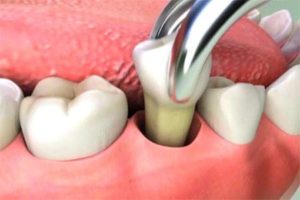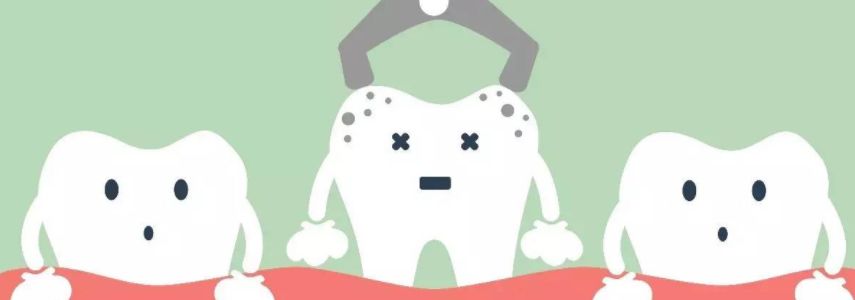Tooth extraction is a painful decision for the dentist, the last one to consider, in the face of a clinical situation that does not allow alternatives or which, if it offers them, are disadvantageous for the patient.
The ultimate purpose of a dentist should be to preserve the natural teeth of their patients, avoiding to undergo unnecessary surgery. With dental extraction, in fact, we proceed to the surgical removal, in jargon also called avulsion, of the tooth from the alveolus. An intervention that becomes even more complex and invasive when the positioning of the dental element to be extracted presents anomalies.
When tooth extraction becomes indispensable
Dental overcrowding
 For an anomaly in the dentition, a condition can occur where the number of teeth exceeds the “natural” number of 32 permanent teeth, giving rise to dental overcrowding (hyperdontics).
For an anomaly in the dentition, a condition can occur where the number of teeth exceeds the “natural” number of 32 permanent teeth, giving rise to dental overcrowding (hyperdontics).
A greater number of teeth has as a direct consequence a misalignment of the arches giving rise to a problem of malocclusion.
A higher number of teeth inside the oral cavity also implies an incorrect positioning of the dental elements that can overlap each other, also creating many problems in the oral hygiene level. In these particular cases, to allow the teeth to reposition themselves correctly inside the mouth, it is advisable to proceed with the extraction of the tooth or excess teeth.
Teeth included
When the teeth remain totally or partially included in the gingiva and do not erupt, they can create serious damage to neighboring teeth (especially if they are included and inclined) or be the cause of deep inflammation. Also in this case the only possible solution is the extraction of the tooth, to restore the correct anatomy of the mouth.
Deciduous teeth that do not fall out
When the so-called milk teeth are slow to fall to make room for permanent dentition, often the dentist, to remedy the lack of natural fall, opts for tooth extraction. An indispensable solution to prevent the underlying permanent tooth from being damaged by not finding the space to erupt.
Teeth with deep caries or pulpitis
An untreated caries can degenerate into a chronic inflammation of the dental pulp (pulpitis) and without a missed intervention the pulpitis leads to the “death” of the tooth, that is to a necrosis of the dental pulp. Inflammation can degenerate to compromise the stability of the tooth. In this case, in the absolute impossibility of applying conservative therapy, such as root canal treatment, the dentist is forced to proceed with tooth extraction.
Badly damaged teeth
Another case where tooth extraction is considered the only possible alternative is structural tooth impairment. A deep fracture of the dental element, which crosses the tooth from the crown to the root, certainly involves the extraction of the tooth because it is impossible to recover with a reconstruction.
Tooth extraction is therefore necessary for specific clinical cases, we have illustrated the most frequent ones. In all other cases, the decision to extract one or more teeth must always be the result of an accurate diagnosis, discussed with the patient and motivated by appropriate clinical choices. In fact, it may happen that the extraction of the tooth is functional to the reduction of the complexity of an intervention or it can favor an easier and complete rehabilitation.
However, be wary of clinics that offer you the extraction of many teeth, sometimes more than ten. This is what some of our patients who have requested estimates for implantology abroad tell us.
















